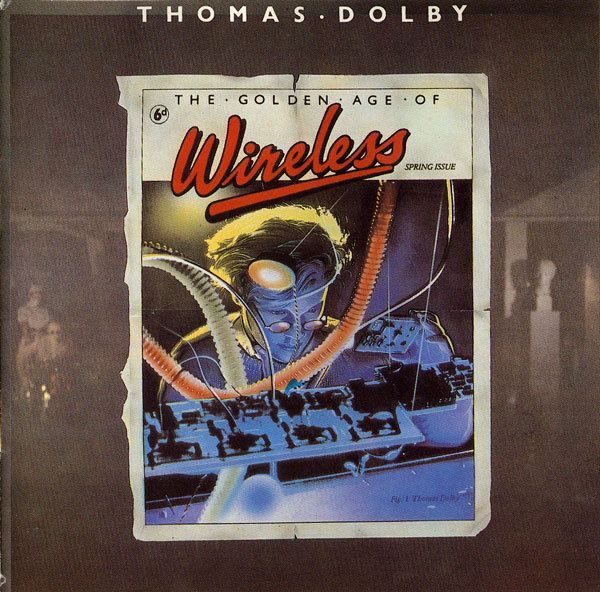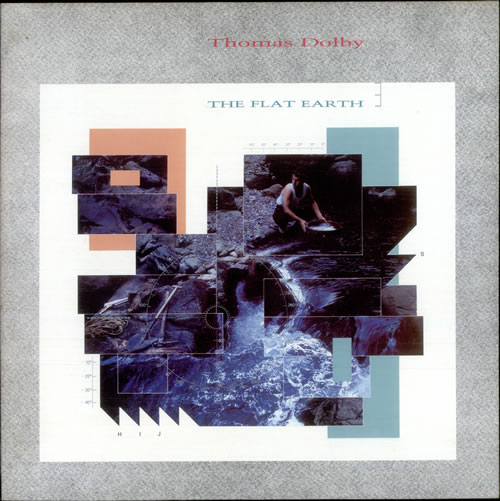Now Playing
Current DJ: Commodore Jones
Ethel Cain Punish from Perverts (Daughers of Cain) Add to Collection
Requests? 773-DJ-SONGS or .(JavaScript must be enabled to view this email address)
 Growing up in Omaha, Nebraska in the mid-1980s, before the existence of the Internet and MP3 players, meant you had to look a little harder to find new and interesting pop music. Fortunately I had a sister who was plugged in to the few places in town where one could find new stuff that wasn’t featured on Casey Kasem’s Top 40. One day she got hold of two albums on cassette tapes that I dutifully sponged off of her and that introduced me to the brilliant synth-pop of Thomas Morgan Robertson, a.k.a. Thomas Dolby.
Growing up in Omaha, Nebraska in the mid-1980s, before the existence of the Internet and MP3 players, meant you had to look a little harder to find new and interesting pop music. Fortunately I had a sister who was plugged in to the few places in town where one could find new stuff that wasn’t featured on Casey Kasem’s Top 40. One day she got hold of two albums on cassette tapes that I dutifully sponged off of her and that introduced me to the brilliant synth-pop of Thomas Morgan Robertson, a.k.a. Thomas Dolby.
In these days of ubiquitous electronic equipment, it’s easy to forget there was a time when it wasn’t possible to just push a button and have coherent sounds (or songs, or albums) come pouring out. Digital sounds didn’t come off the shelf; they had to be built from the ground up and made into something useable, hopefully by someone who knows what they’re doing, musically and technically. Dolby was one of those people. His skills enabled him to make two of the best pop albums to come out of the New Wave era.
The Golden Age of Wireless was originally released in 1982. Dolby’s only hit in America was this album’s first track, “She Blinded Me with Science,” a jumpy, expertly crafted techie love song with an accompanying video that was the exact kind of computer-pop that commercial radio and MTV could use to usher in the electronic age. In the U.S., the song and video quickly relegated Dolby with other symbols of ‘80s “nerd” culture like the band Devo and the movies Revenge of the Nerds and Weird Science.
As with a few other “one hit wonders,” Dolby’s U.S. breakthrough song wasn’t really indicative of what was on the rest of the album or the depth of the artist’s talent. After track #1, Dolby uses his keyboards and drum machines to address some heavy subjects, ranging from his preoccupation with technology its effect on humanity (“Radio Silence,” “Airwaves,” “Windpower”), to wistful nostalgia for lost childhood love (“Europa and the Pirate Twins”) to eating disorders (“Weightless”).
And at a time when it seemed the Cold War between Reagan’s America and the U.S.S.R. would escalate to a nuclear war any day, Dolby seemed to be meditating on the shifting fortunes of The West, symbolized by a wrecked military sea vessel, in “One of Our Submarines.” There’s something chilling and prescient in the way he sings “Bye bye, empire…empire, bye bye” in the chorus. And when he sings about a “Cloudburst on Shingle Street,” there is enough ambiguity in the lyrics to interpret the event as weather-related or something much more horrifying.
 Two years after Golden Age, Dolby released The Flat Earth, a seven track gem with the same full, almost cinematic sound arrangements and impeccable production values of its predecessor. Opening with the politically charged electro-funk of “Dissidents,” Dolby adds jazz inflections to the synth-pop mix, resulting in the exotic-sounding and inspirational title track, the smoky-lounge lament “I Scare Myself,” and “Screen Kiss,” a song that’s as vivid, disturbing, and brilliant a musical depiction of the dark side of Hollywood as Mulholland Drive was for the movies.
Two years after Golden Age, Dolby released The Flat Earth, a seven track gem with the same full, almost cinematic sound arrangements and impeccable production values of its predecessor. Opening with the politically charged electro-funk of “Dissidents,” Dolby adds jazz inflections to the synth-pop mix, resulting in the exotic-sounding and inspirational title track, the smoky-lounge lament “I Scare Myself,” and “Screen Kiss,” a song that’s as vivid, disturbing, and brilliant a musical depiction of the dark side of Hollywood as Mulholland Drive was for the movies.
After making these two records, Dolby’s albums output were fewer and farther between. He went on to become a very successful producer, arranger, session musician, and forward-thinking creative guru dedicated to furthering the use of technology in media. If he had not done anything else besides these two remarkable albums, though, Dolby’s place in pop music history would be secure. I’m glad I was able to grow up with these records in my collection, as they showed me what electronic music and pop music were capable of in the right hands.
Next entry: Only Three Days Until The Hudson Branch at Metro!
Previous entry: Gapers Block and CHIRP Radio Present The Hudson Branch at Metro